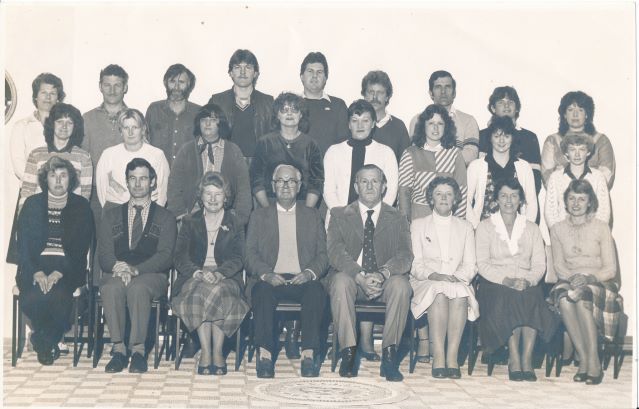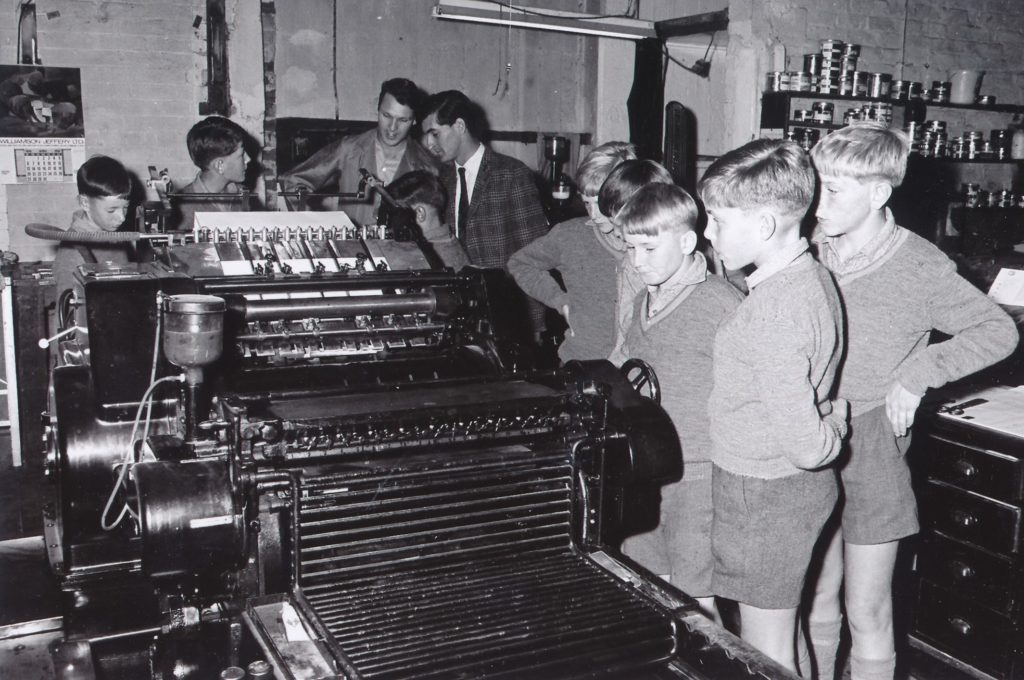The Inde
-
A Tribute to the Cambridge Independent
This is part one of a two-part story written by Cambridge Historical Society committee member Carole Hughes.
A good newspaper is the hub of the town or city. Fifty years ago, when Cambridge had a population of approximately 10,000, I became associated with its hub – the Cambridge Independent. Or, as it was known forever and even now, the Inde.
The Inde started as the Waikato Independent under the auspices of founder/owner David Pirani. It changed its name to the Cambridge Independent in 1966 and, after 91 years of existence, closed in 1995.

Inde staff 1980s
Back row: Jean Wallis, Bruce Russ, Bob Perrin, Grant Boulton, Brent Boulton, Lindsay Smith, George Borthwick, Michael King, Tania Cook.
Centre: Marie Thompson, Judith Beange, Carole Hughes, Iza McVeigh, Mary Hinchco, Sheryl Cochrane, Alison Short, Lorraine Searle.
Front: Sheila McOnegal, Peter Nicholson, Joy Cooper, Gib James, George Boulton, Nola Silk, June Fell, Marlene Romeyn
Back to the start
The first Cambridge newspaper was the Waikato Mail launched in September 1880. This closed and the Thames Valley Recorder was started in 1883. Almost immediately afterwards came the Waikato Gazette. Eventually, an evening paper was started – the Cambridge News, which lasted until 1893. In 1895, the Waikato Advocate started in Cambridge and moved to Hamilton, and then the Waikato Times arrived. Sam Boulton started a free newspaper usually eight pages published by Premier Printing. This amalgamated with the Waikato Independent in 1942.
But this is all about my personal love affair with the Inde which had such a huge impression on my life. It was the friendship and humour from the public and the staff which was endearing.
The Inde at the time I stepped through the door was in Duke Street. It extended to a large area – a shop with stationary, manned by several batches of happy smiling women who introduced Cambridge’s very first fax machine. A triumph of technology!
A separate entrance took you into a Clark Kent/Superman/Lois Lane atmosphere – a small, crowded group of offices with ever-changing editors, the owner/manager George Boulton, and a separate office where the enigmatic, humorous, intelligent, ageing Gib James, respected past editor, worked. And then a small, cramped area where two advertising reps, the editor and I (as a full-time journalist) worked tapping out articles on old typewriters.
And behind all this was the work area – large, full of staff where all types of newspaper-orientated work were carried out. At that time, the Inde was printed at Te Awamutu. There was a dark room run by Brent Boulton, and Brent and his brother Grant both worked in that large printing area. Brent was the official photographer and developed all the photos.
I remember going to report on one particularly important piece of news taking copious photos – and returned to be told I had omitted to put a film in the camera! Oops!
At that stage, the Inde was produced twice per week. The journalists did their job, typed or handwrote their articles, gave them to the proofreader who sent them to the printing complex to be typeset.

Students from St Peters’ Catholic school on a visit on 27 May 1969. Photo by Reg Buckingham
They were carved up and put through a waxer and placed on the page indicated by the “dummy” – a small “map” of what the final newspaper would look like. The typesetters or compositors and linotypers created and printed the typeset articles. These were called the “flats” and they were sent very rapidly to Te Awamutu to be printed.
You could go out to production and watch the paper being produced and see the article that you had written. Now of course it’s all done on computer.
My youngest daughter, says she remembers as a very small child, going into the Inde, out the back to production where the proofreader Len Chivers would show her all the machines. She loved the business of it, the explanation, the clack of the machines. It was a world of its own. Newspapers wriggle into your psyche and your blood. You never get over it.
Not only did the Inde produce the newspaper, it produced leaflets, brochures, anything that could be printed. Black ink all over the place.
Meanwhile in the reception/editorial office, the journalists did what they do now – identified the news from outside, either phoned in or personal stuff from local knowledge. They typed the article, gave it to the editor, watched as it eventually pasted up, while rapidly getting on with the next issue.
George Boulton was the son of the owner, Sam Boulton. He grew up with the Inde as did his sons Grant and Brent. He was the sports editor – a tall, big man, but gentle. Blokes would come into his office and hilarious bloke repartee would ensue. George’s wife Bev was always there, part of it. George was about rugby or whatever sport was being publicised. I believe netball got in there somewhere.
Gib James worked until just before his 80th birthday. His humour was extraordinary, and his journalistic skills unchallengeable. Gib did a general printing apprenticeship when he was 16 and went forward to operate and eventually complete a linotype machine hand-set type. He completed a printing trade apprenticeship at 21 and became a reporter. He served in the Pacific when the Second World War started. He later, along with Sam Boulton, obtained the majority of the share capital of the Inde, with George’s Dad, becoming managing director. George took over his father’s interests in 1966 when Sam Boulton died. He became a partner and manager of the company. [To be continued next issue.]
